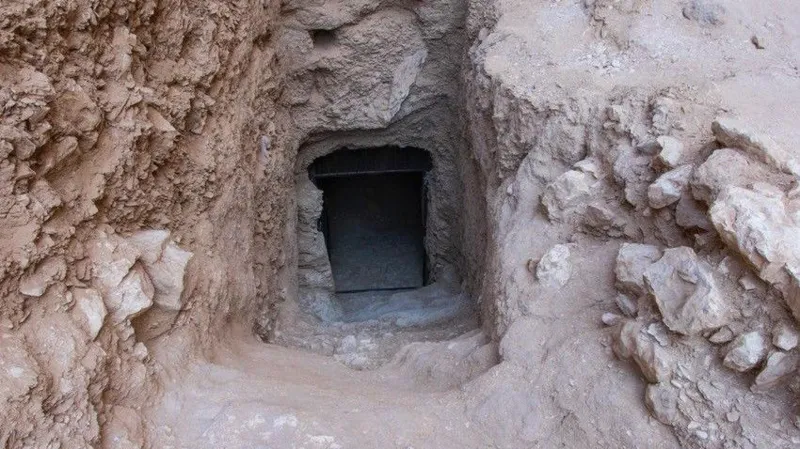Archaeologists have uncovered the long-lost tomb of Pharaoh Thutmose II, marking the first discovery of a royal burial chamber since King Tutankhamun’s tomb was found in 1922.
A team of British and Egyptian researchers located the tomb in the Western Valleys of the Theban Necropolis, near Luxor. Until now, scholars believed that early 18th Dynasty pharaohs were buried much farther away, closer to the Valley of the Kings.
The tomb was unusually located in an area typically associated with royal women. However, once inside, the researchers identified a key indicator of a pharaoh’s burial: a decorated ceiling.
Evidence of Royal Status
Dr. Piers Litherland, the mission’s field director, explained that the burial chamber’s ceiling was painted blue with yellow stars, a design exclusively used in royal tombs.
“The moment of discovery was overwhelming,” he told the BBC’s Newshour. “When you come across something unexpected, it’s emotionally intense. I was so moved that when I emerged, all I could do was break down in tears.”
According to Dr. Litherland, this breakthrough finally resolves the mystery of where the early 18th Dynasty pharaohs were originally buried.
ALSO READ: Bogus Doctorate Scandal: ICT Minister Mavetera Under Fire for Academic Fraud
Despite the recovery of Thutmose II’s mummified remains centuries ago, the original location of his tomb remained unknown until now.
A pharaoh lost and found
Thutmose II ruled Egypt between 1493 and 1479 BC and was an ancestor of Tutankhamun. He is best known as the husband of Queen Hatshepsut, one of Egypt’s most powerful female pharaohs.
The newly discovered tomb features a grand architectural design, including a large staircase and an extensive descending corridor. However, excavation was challenging due to blockages caused by flood debris and structural collapses.
“To reach the burial chamber, we had to navigate a narrow 10-meter passage with only a 40-centimeter gap at the top,” Dr. Litherland explained.
Inside, the team discovered religious imagery from the Amduat, a funerary text reserved for pharaohs—further confirming the tomb’s royal status.
A Mysterious Empty Chamber
Although the tomb’s decorations pointed to its royal owner, it contained no burial remains. Surprisingly, it had not been looted; rather, it had been deliberately cleared in ancient times.
Investigations suggest that the tomb was built beneath a natural waterfall, which led to severe flooding just a few years after Thutmose II’s burial. As a result, the ancient Egyptians moved the king’s remains and belongings to a new location.
While sifting through debris, the team discovered fragments of alabaster jars inscribed with the names of Thutmose II and Hatshepsut, crucial clues that confirmed the tomb’s identity.
“These fragments likely broke when the burial was being relocated,” Dr. Litherland noted. “Ironically, if they hadn’t, we might never have known whose tomb this was.”
More Discoveries Await
This discovery is the result of over 12 years of excavation by Dr. Litherland’s New Kingdom Research Foundation in collaboration with Egypt’s Ministry of Tourism and Antiquities. The team has already excavated 54 tombs in the western Theban mountains and identified over 30 royal women and court figures.
Egyptian Minister of Tourism and Antiquities Sherif Fathy hailed the discovery as a historic breakthrough:
“We have found the first royal tomb since Tutankhamun’s burial chamber over a century ago.” It is a landmark moment in Egyptology and a significant step in understanding our shared human past.”
Dr. Litherland’s team believes they have an idea of where Thutmose II’s potentially still intact second tomb may be located. If found, it could hold the long-lost treasures of this ancient king.
